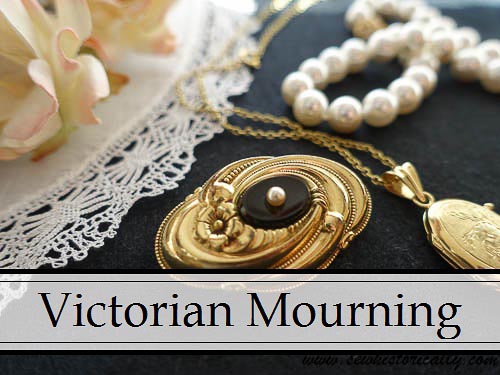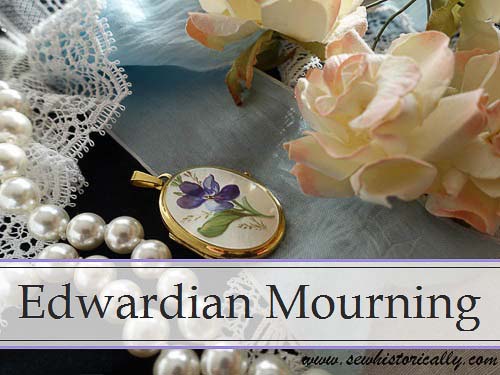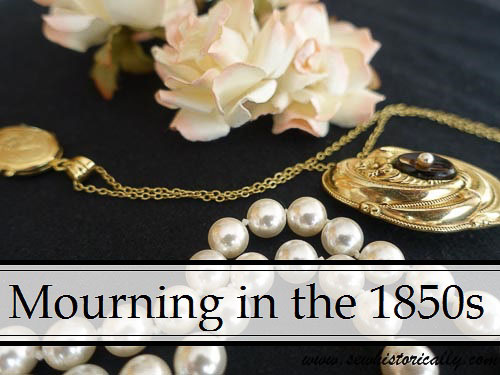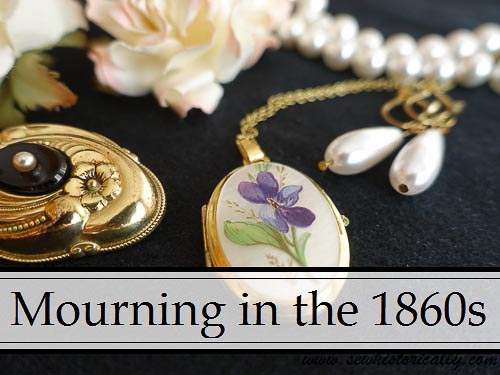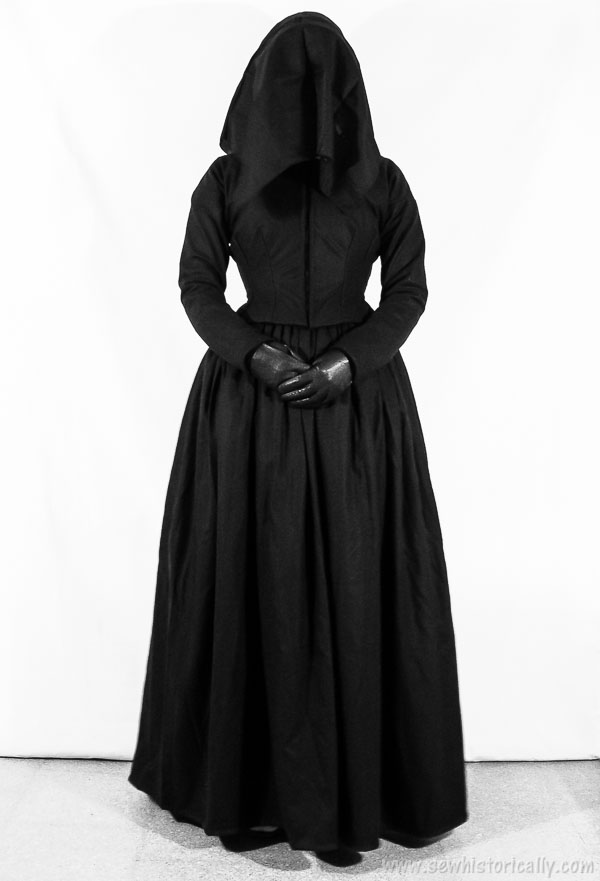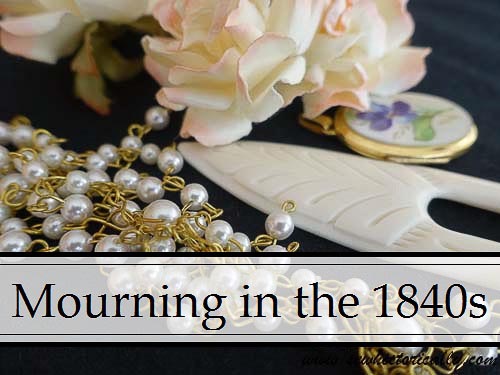Wearing mourning clothes are an ‘outward token that they loved those they lost.’ (Ladies’ Magazine and Literary Gazette, 1831, p. 117)
In the Victorian and Edwardian era, wearing mourning was a social obligation but it also helped to protect the feelings of the mourners: Every stranger would instantly recognize the mourning dress, know of their loss and wouldn’t hurt their feelings with unnecessary jaunty remarks.
The colors of Victorian mourning are black, white, gray, purple, lavender and scarlet. Black is the color most associated with mourning wear. However, not all extant black dresses are mourning dresses: Continue reading Victorian Mourning
